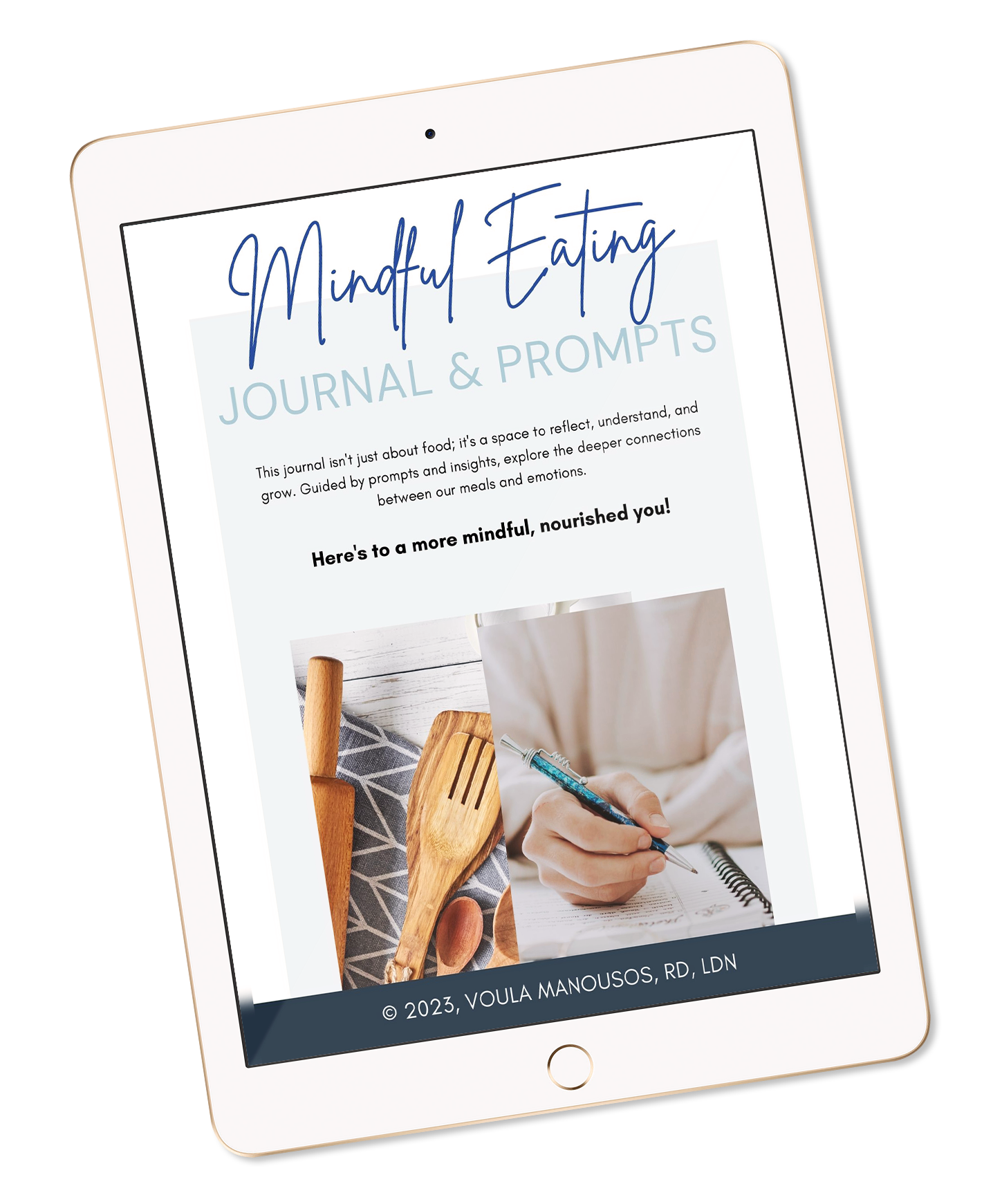Let’s talk about emotional eating.
There you are. The kitchen lights down low. Maybe you’ve got a glass of water in hand. You glance at the fridge and walk toward it and before you even open the door, you know you’re not hungry. But you go anyway.
You might not hear your stomach growl. Your body might not even ask for anything, but you reach for something anyway. The chips. The ice cream. The “just one more” bag of cookies.
So you stop and ask yourself the question: “Why am I eating right now?”
If the answer is anything other than “because my body needs fuel”, you deserve to know why.
You deserve clarity. You deserve the truth behind the cravings.

Here’s the thing: emotional eating isn’t a personal failure.
It’s not a lack of willpower. It’s your body and brain trying to speak to you. It’s the urge when your mind or heart or schedule is running on empty. It’s the food reaching for you, rather than you choosing the food.
I want to invite you into something different.
A way to stop eating on autopilot. To start asking, “Is this hunger… or something else?”. That’s why I created a simple tool to help you do exactly that in the moments when you’re standing in front of the fridge and asking yourself what the heck am I doing?
Download the free workbook “Triggered or Truly Hungry?” here and follow along as we dig into emotional eating together.
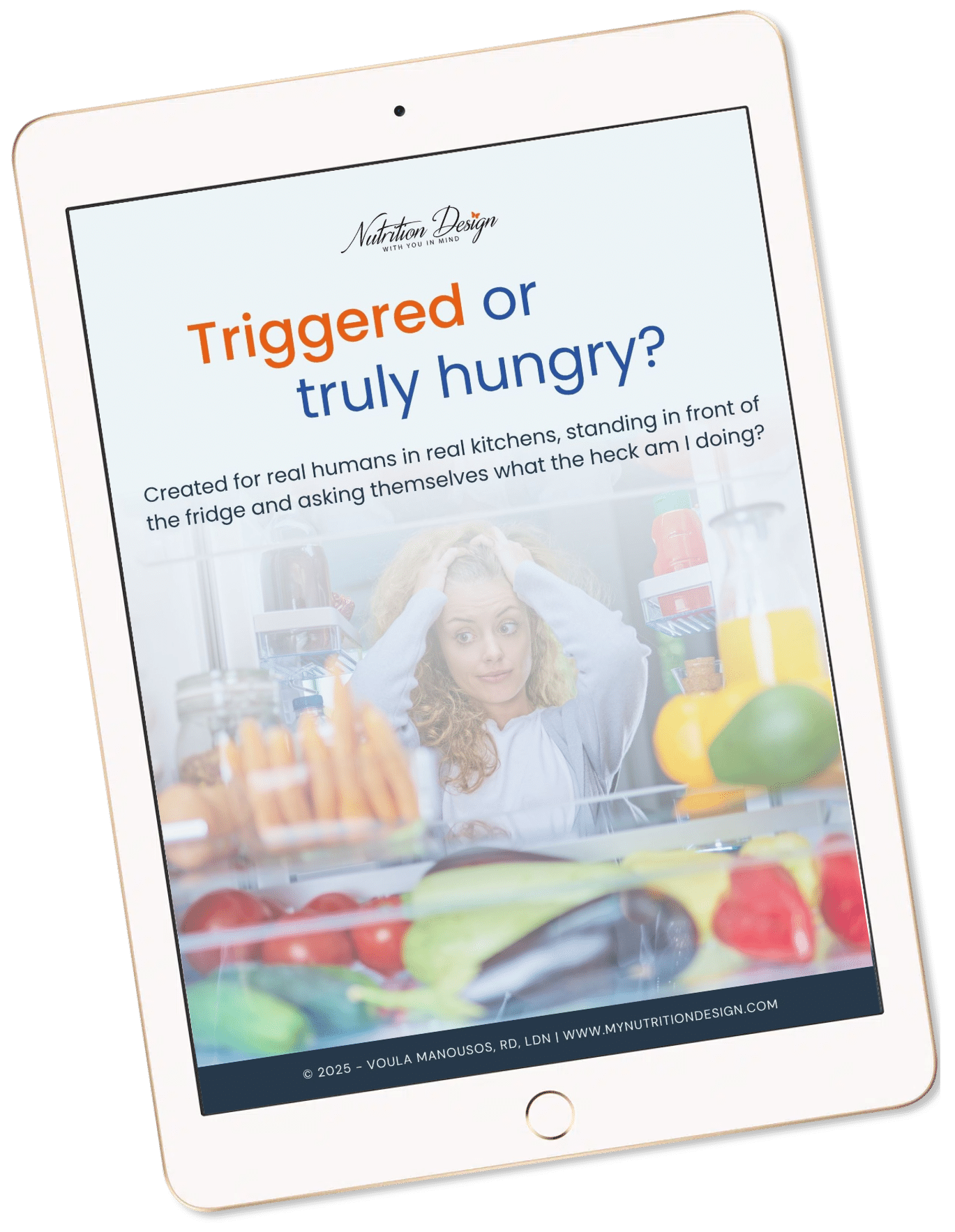
We’re not here to judge the food. We’re not here to shame the snack. We’re here to listen and understand eating behaviors. To reclaim your relationship with food as something that supports you.
Because once you can ask that question, “Why am I eating right now?” you begin to shift the whole story.
What Emotional Eating Actually Is (and Isn’t)
Let’s get clear on what we’re talking about when we say emotional eating because it’s not the same as physical hunger, and confusing the two keeps far too many of us stuck in the same loop.

What It Is
Emotional eating happens when we’re reaching for food not because our body needs fuel, but because our mind or heart is trying to handle something else.
Emotional eating is typically defined as “the tendency to overeat in response to negative emotions such as anxiety or irritability.”
It’s when the urge to snack comes after a stressful day, during boredom, loneliness, or fear, not when our stomach is making its voice heard.
Kaiser Permanente describes it simply: eating for reasons other than hunger. The result? Sometimes eating more food than the body needs, sometimes a numbing of feelings and often, the familiar regret or confusion afterward.
What It Isn’t
It isn’t about hunger. Physical hunger feels different. It builds gradually. You’ll notice your stomach growl or your energy dip. You feel ready to choose something nourishing. You’re eating because your body wants it.
Emotional eating often feels urgent. It’s abrupt, and the craving may be for something specific like a certain snack or flavor. You may be feeling something else and using food to manage it. Research shows stress‑induced eating, for example, is driven by hormonal shifts, not a true nutrient deficit.
Common Triggers
- Stress & anxiety: When you’re carrying tension, your body craves quick comfort, not necessarily real nourishment.
- Boredom & procrastination: The space between activity and rest can feel empty, and food becomes the filler.
- Loneliness & connection gaps: We reach for food when people or purpose feel missing.
- Habit & transition moments: Did you walk in, drop the keys, and stare at the fridge again?
- Avoiding feelings or tasks: You might eat because your brain is saying “not now” to something you don’t want to face.
Eating Behaviors and Emotional Triggers: What the Science Says
When we talk about emotional eating, it’s easy to focus only on the act itself, grabbing the ice cream, diving into the chips. But to really shift things, we need to zoom out and look at your overall eating behavior because that’s where the real patterns (and solutions) live.
Emotional Eating Isn’t Just About “Bad Days”
Emotional eating doesn’t only happen after a tough conversation or a stressful deadline. It’s part of a bigger picture of how you respond to both positive and negative emotions.
Happiness or relief can trigger the urge to celebrate with food.
That’s why I help clients recognize not just the snack they reach for, but the emotion that led them there.
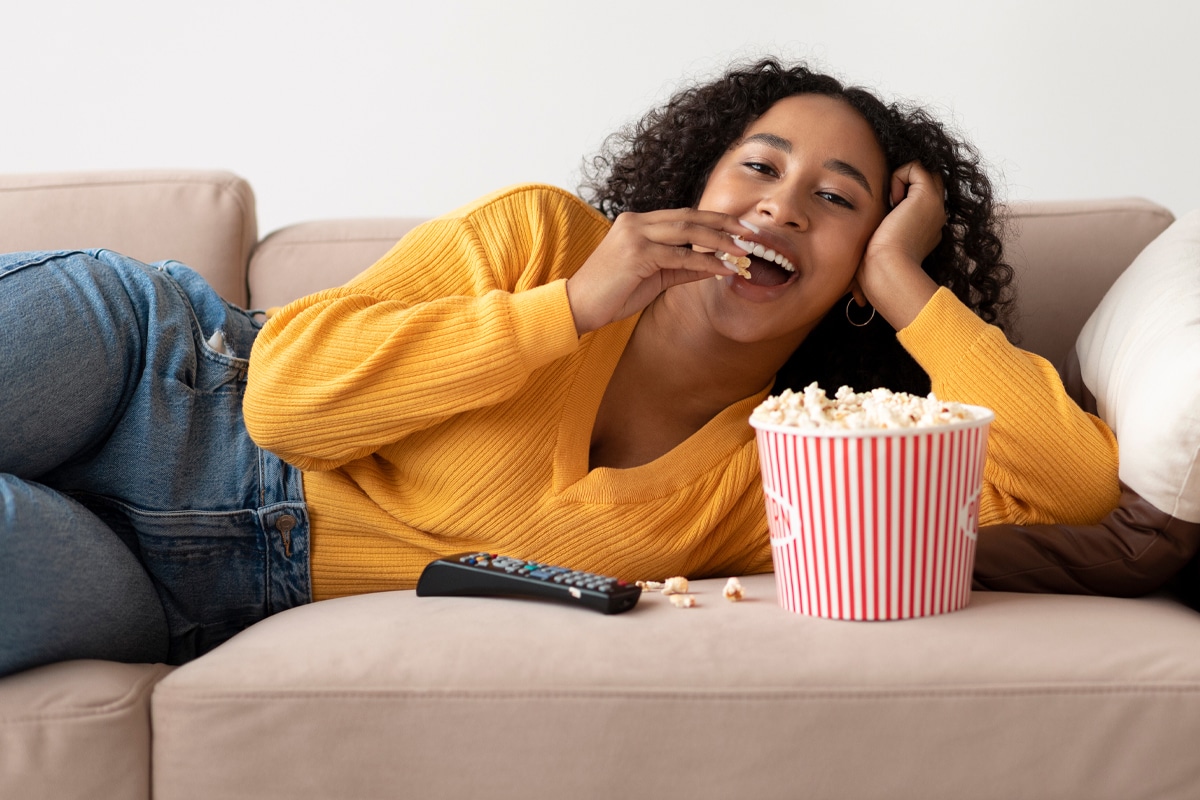
Emotional eating isn’t just about difficult emotions.
Positive feelings like joy, relief, and reward can also spike emotional food intake, especially with favorite foods like sweets, salty snacks, and fatty foods. A study in the Journal of Nutrition and Health Sciences found that both positive and negative emotions significantly influenced people’s willingness to consume sweets, even when they weren’t physically hungry.
That means “comfort eating” isn’t always about sadness. It can also be about habit, celebration, and sensory reward.
Food Cues vs. Internal Cues
Many of my clients come in thinking their eating behavior is about willpower. But what they’re really reacting to are external food cues like walking into the kitchen, seeing a commercial, or opening the pantry out of habit.
Compare that with internal cues like a rumbling stomach, a drop in energy, or a mental fog. The difference is subtle, but critical. Emotional eating often ignores internal cues and leans hard into external ones.
Research links external eating (eating in response to environmental cues) and restrained eating (eating under mental rules or dietary restriction) to a higher risk of emotional eating, especially among those trying to manage body weight or control their eating habits.
That means the more we try to “control” our food, the more disconnected we become from our actual hunger signals.

Stress, Emotions, and the Role of Triggers
You’ve probably already experienced it: higher stress levels lead to more cravings which leads to less control. You’re not imagining that.
Studies show that perceived stress and psychological well-being directly influence both food intake and food choices. For example, a 2021 study published in Nutrients found that stress related to the COVID-19 pandemic led to increased consumption of high-sugar and high-fat foods, even when participants weren’t physically hungry.
Researchers noted that this “comfort eating” pattern often emerged as a way to cope with emotional discomfort, not to satisfy nutritional needs.
The more we use food to regulate emotions, the more we train the brain to use that loop: difficult emotions = food as a “pick me up” = brief relief = emotional crash… and then you repeat the cycle.
That’s the habit loop we’re interrupting with the tools in the Triggered or Truly Hungry? workbook.
Body Weight and Emotional Eating: Not What You Think
Let’s bust a myth: emotional eating isn’t always tied to how much you eat, it’s about why you eat. Still, there are patterns we can’t ignore.
Research has shown that higher emotional eating is associated with higher body mass index (BMI) and weight gain over time, especially when paired with restrictive eating habits or chronic dieting cycles.
But correlation is not causation. Emotional eating doesn’t necessarily cause weight gain, disconnection from your body’s true needs does.
That’s why tools that help you pay attention to emotions, triggers, and hunger cues are the missing link in most treatment programs.
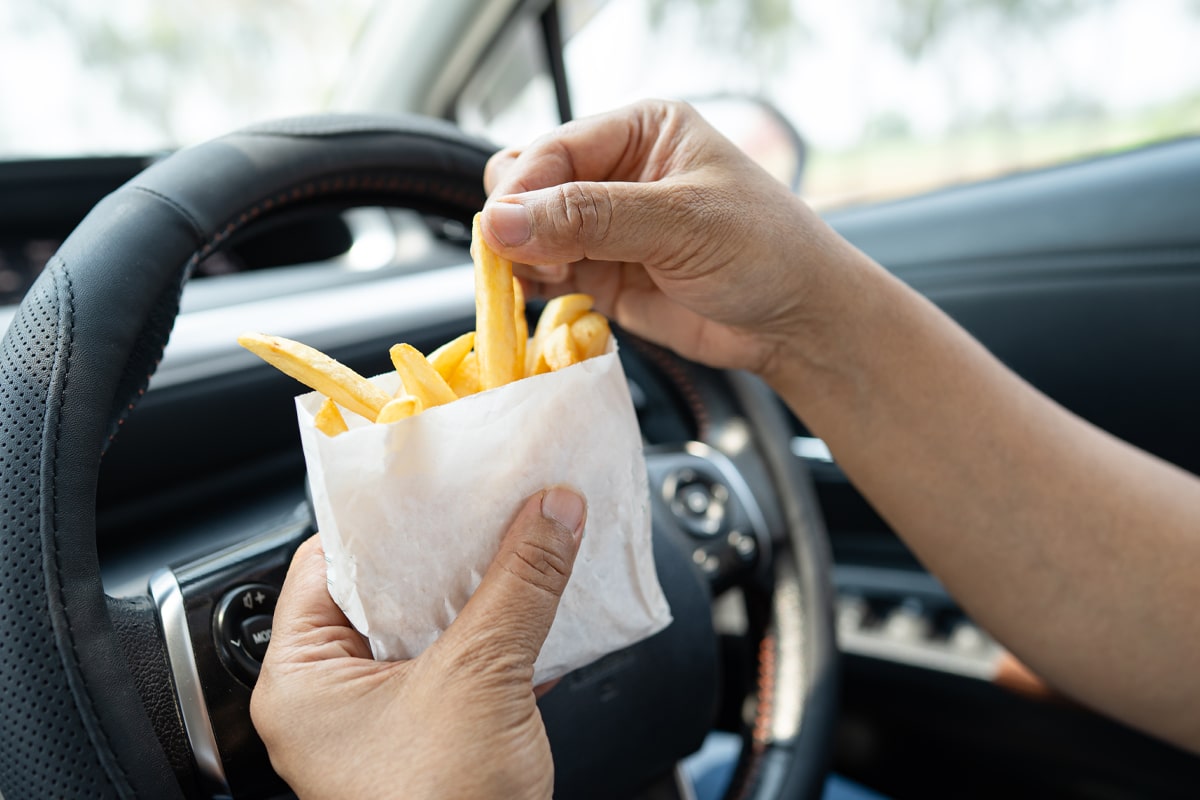
Emotional Regulation: The Real Goal
At the root of emotional eating isn’t food, it’s emotional regulation. That means the ability to feel something and respond in a way that supports your well-being, not just masks the discomfort.
Mindfulness-based tools like the Body-Mind-Feelings Check and the Redirect Chart help develop that regulation muscle. And meditation, in particular, has been shown to reduce emotional eating, increase awareness of internal cues, and support weight management efforts.
If that’s your goal, not dieting, these tools give you a way to start.
Want to use these tools in your own life?
Download the free “Triggered or Truly Hungry?” workbook. It’s packed with strategies I use in coaching to help clients build emotional awareness, improve eating patterns, and respond, not react, to food cravings.
Why “Healthy Swaps” Don’t Work for Emotional Eating
Trying to swap chips for carrots without addressing why you grabbed the chips in the first place misses the point entirely.
I’ve seen clients swap “bad” food for “good” food and still feel deeply unsettled. That’s because the root wasn’t about food, it was about feeling, thinking, transitioning.
Until that’s heard and addressed, the “healthier option” may as well be a bandaid.
Understanding the difference between real hunger and emotional eating is the foundation of what I do in my private coaching.
If you’re ready to turn that awareness into action, your free workbook “Triggered or Truly Hungry?” walks you through exactly how.
Why Willpower Has Nothing to Do With It
Let’s get one thing straight: when you are emotionally eating, it is not a willpower issue.
If you’ve ever beaten yourself up for not having more “discipline” around food, you’re in good company.
Most of my clients start here thinking that if they could just try harder, they’d finally get it right.
Emotional eating isn’t a failure of effort, nor is it simply stress eating . It’s a response. A pattern. A loop your brain is running on autopilot to soothe discomfort, dodge stress, or fill an emotional gap.

What are the most common causes of emotional eating?
Here’s a typical triggered eating loop:
- You feel something uncomfortable: stress, overwhelm, loneliness, fatigue.
- Your brain looks for a fast, familiar solution.
- Food is accessible, comforting, and socially acceptable.
- Boom! Loop complete.
That’s the neuroscience behind it. Your brain doesn’t care about your macros. It wants the discomfort to stop.
Want a real-life example?
Let’s talk about Jane (not her real name). Every night, like clockwork, she’d find herself rummaging through the pantry. Ho-Hos, cookies, chips… whatever was calling her name.
She wasn’t hungry. She knew she wasn’t hungry. But she kept telling herself, “I just need to have more control. Tomorrow, I’ll do better.”
Tomorrow came. And instead of grabbing the Ho-Hos, she reached for carrots because hey, healthy, right?
But that only annoyed her. She didn’t want carrots. She wanted comfort. And those carrots weren’t cutting it.
When Jane came to me, frustrated and exhausted, we didn’t make a meal plan. We didn’t assign “right: or wrong” to her eating habits. We didn’t count calories. We started with the real question: What are these food cravings trying to tell me?
It turns out, it was relationship stress.
She was carrying the emotional weight of a partner who made her feel invisible. Comfort food became her rebellion, her relief, her “me time.”
Once we named that, everything shifted.
She began addressing the root cause, not just the symptoms. And guess what? The late-night snack attacks lost their power. Not because she had more willpower, but because she didn’t need food to manage her emotions anymore.
As a registered dietitian with 25+ years of experience, I can tell you: this is the work that actually changes things. Swapping “bad” food for “good” food is like putting a bandage on a broken pipe. Until you fix the leak, you’re just mopping up the floor every night.
If you’re tired of playing the willpower game, it’s time to shift from self-blame to self-inquiry.
And the good news? That’s exactly what my free Triggered or Truly Hungry? tool helps you do.
Introducing the Body-Mind-Feelings Check
If you’ve ever felt stuck in that moment of “I’m eating, but I don’t know why,” this is the tool that helps you break the cycle.
When emotional eating takes over, what’s often missing is awareness. Not discipline. Not willpower. Just the ability to pause for a moment and ask the right questions.
That’s where the Body-Mind-Feelings Check comes in.
It’s a simple, 3-step process I teach all of my private clients and it’s one of the most powerful ways to shift from eating on autopilot to eating with intention.
Let’s walk through it.

Step 1: BODY. Am I physically hungry?
Before doing anything else, we check in with the body.
Ask yourself:
- When was the last time I ate?
- Am I feeling any physical signs of hunger like an empty stomach, low energy, irritability?
- On a scale of 1 to 10, how hungry am I?
Your body has real signals. True hunger is physical. If you feel it, honor it. You’re allowed to eat. No guilt. No second-guessing.
But if your stomach’s quiet and the desire to eat is still loud? That’s your clue to keep going.
Step 2: MIND. Am I avoiding something?
Now we scan the mind. Ask yourself:
- What’s on my mind right now?
- Am I overwhelmed, distracted, or trying to procrastinate?
- Is food becoming my way of delaying something I don’t want to do?
This is where emotional eating sneaks in the back door. You’re not hungry. You’re avoiding something.
It might be the inbox you don’t want to open, the conversation you’re dreading, or the simple burnout of being pulled in ten different directions. Food becomes the buffer.
Noticing that, without shame, is how you start to rewrite the script.
Step 3: FEELINGS. What am I feeling, and what do I actually need?
Here’s where it gets honest.
Ask:
- What am I feeling in this moment? (Lonely? Stressed? Anxious? Unseen?)
- What do I actually need right now?
Maybe you need comfort. Maybe you need a break. Maybe you need a hug, a nap, or five minutes alone in your car blasting 90s R&B. (Been there.)
The point is this: when you give yourself the space to feel the feeling, you might discover that food isn’t the answer, at least not right now.

Mindful Eating Changes Everything
Most of us never learned how to ask these questions. We were taught to “watch what we eat,” not to listen to what our body and brain are trying to tell us.
But this check-in gives you power. Not over food, but over yourself.
When you know why you’re reaching for something, you can make a choice. Not a reaction. A choice.
Want a printable version of this tool to keep in your kitchen, your purse, or next to your favorite snack drawer?
I made one for you here. Download Triggered or Truly Hungry?
It’s time to stop judging yourself and start getting to know yourself. That’s what this work is really about.
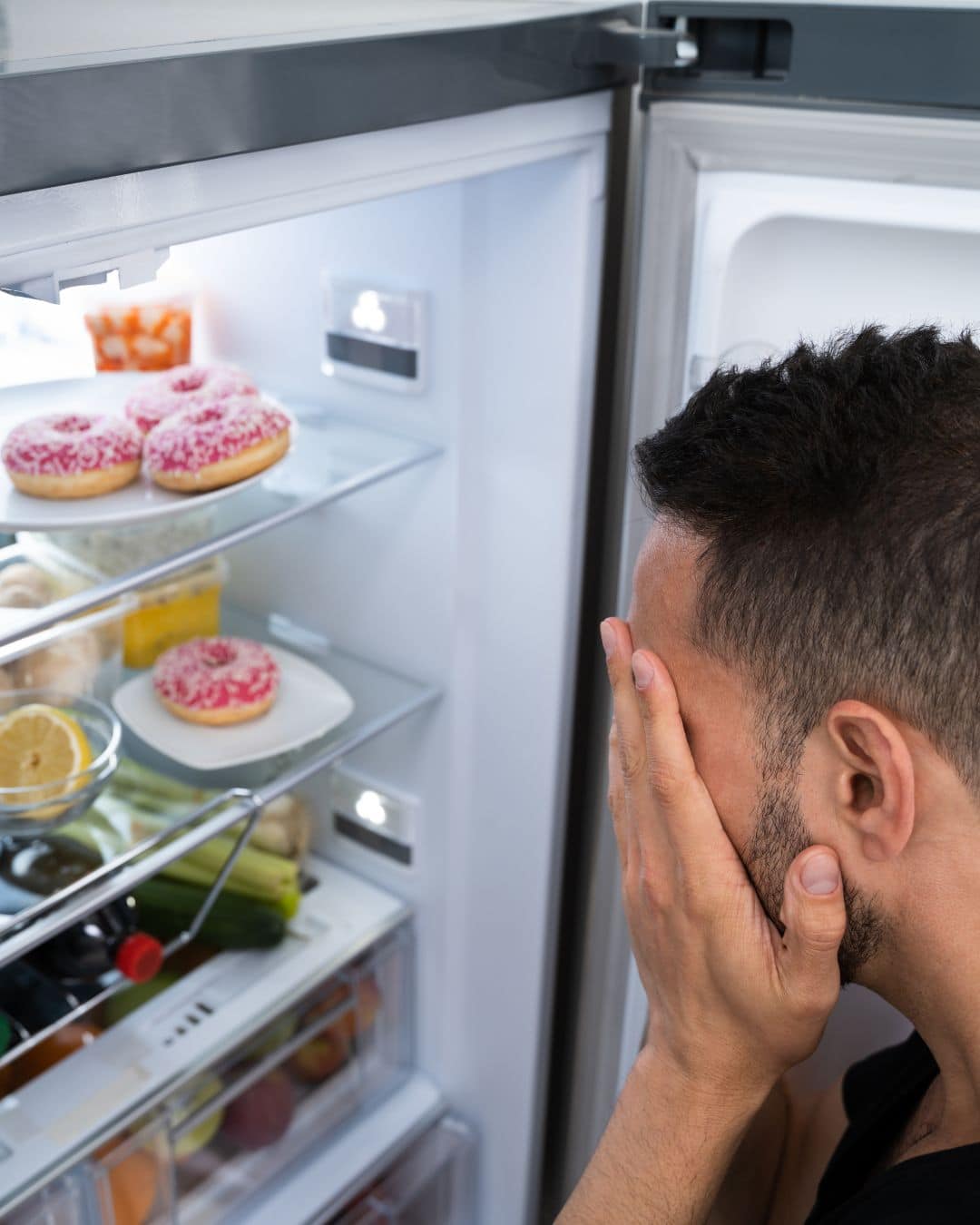
What to Do When You’re Not Hungry But Still Want to Eat
Let’s say you’ve done the check‑in, asked the question, “Am I hungry… or is it something else?” And yet… the craving is still there. Your brain says “snack,” even though your body says “nah.” What now?
This is where you shift from awareness to action.
When you’re dealing with emotional eating (sometimes called “triggered eating”) one of the most compassionate, effective moves is to redirect. Not as punishment, not as denial, but as a pause. A choice. A moment of kindness for yourself.
Research shows that emotional eating often arises when our ability to regulate emotions gets taxed: stress, boredom, loneliness. These push us toward food for comfort. Redirecting attention, rather than resisting food directly, is a proven strategy.
Redirects That Work (and feel doable, not drastic)
Here are some client‑tested alternatives I share in my coaching sessions. These aren’t “fixes”. They’re options that are gentle and far more sustainable than another food rule.
- Five minutes of solitaire or a word puzzle on your phone (you can’t snack and shuffle cards simultaneously)
- A call or quick voice message to a friend: “Hey, I’m taking a 5‑minute break. What’s been going on?”
- Knitting, playing a musical instrument, or doing a craft you’ve forgotten you enjoy
- Reading a book or a magazine article. Just one page before the fridge door opens.
- A slow walk outside, around the block, even 3 minutes counts. Let your body shift gears from that “I need to eat” signal to “I just moved” signal
- Doing the Body‑Mind‑Feelings Check again and writing: “What I really need is…” (not “What food can fix this?”)
Remember: the redirect isn’t about denying the food forever.
It’s about giving yourself space to ask, “Is this what I want… or is this what I’m trying to avoid?”.
You still can eat the chips or ice‐cream if after the check‑in, you realize you’re genuinely hungry or it’s a conscious treat. The big win is the pause before.
Your own customizable Redirect Chart is right in the free workbook you grabbed: “Triggered or Truly Hungry?”.
Grab it here if you haven’t yet.
The redirect chart is part of the free guide you can grab here.

Why Redirects Matter for Emotional Eating
When you skip the redirect? You stay on autopilot. You eat to soothe or distract while the real emotional need sits in the passenger seat, unchecked.
Over time, that loop builds loyalty: stress → snack → brief comfort → repeat. And the snacks don’t even do what you need them to do.
When you redirect, you signal to your brain: “I’m not ignoring you. I’m choosing something else.”
That breaks the automatic response.
That gives your body, mind, and feelings the chance to speak. That’s where real change begins.
You’re not trying to fix “the food.” You’re trying to change your relationship with the moment before the food. That’s the shift.
If you’re ready to stop being driven by the urge and start being guided by your own clarity, download the workbook now and use the chart in your next real moment. Redirect with purpose. Eat with intention.
Key Differences Between Physical and Emotional Hunger
Making the distinction between physical and emotional hunger isn’t about labeling yourself, it’s about understanding your body and choices. That understanding can free you from eating out of habit, emotion, or autopilot.
1. Onset & Sensation
True physical hunger is a gradual signal. You’ll feel your energy dip, you might notice a subtle stomach rumble or decreased concentration.
You might look at your clock and think it’s “time to eat.” According to the Duke Lifestyle & Weight Management Center, physical hunger builds slowly and is tied to your body’s biological needs.
Emotional hunger, on the other hand, often arrives fast, is tied to a feeling or trigger, and demands that specific thing. Typically you crave “something” considered junk food, like “that cookie,” “that bag of chips,” or “just one more piece.”
2. Variety vs. Specificity
When your body needs fuel, you’re open to many food options (sandwich, salad, yogurt, leftovers).
With emotional hunger, you want only the thing: salty, sweet, crunchy, the one food that your brain decided it needs now. If you’ve ever tried to substitute a “healthier snack” and found yourself still wanting the original, you’re seeing this difference in action.
3. Satisfaction & Aftermath
Eating for physical hunger leaves you feeling satisfied. Emotional eating often leaves you feeling stuffed, regretful, or disconnected from the satisfaction you expected.
According to the University of Arkansas Extension article, emotional hunger isn’t satisfied by a full stomach, whereas physical hunger usually is.
If you finish eating and still feel the same urge simmering, alarm bells should ring: something else is at play.
4. Trigger Source: Internal Need vs. External Cue
Physical hunger speaks from inside. It’s your body saying: “Hey, I need fuel.” Emotional hunger often speaks from outside: stress levels, watching TV, food cues, that familiar path from car to fridge after work.
If your food urge shows up as soon as you walk through the door, or when you hit “done” on a work task, it’s more likely emotional than physical.
5. Purpose: Fuel vs. Feeling
Here’s the major point to take away from this: physical hunger is about fuel. Emotional hunger is about feeling.
Comfort, reward, numbing, connection are all noble human needs. But food isn’t always built for the job. When you eat to nourish, you’re supporting your body. When you eat to respond to emotion, you’re using food as the tool.
6. What This Means for You
When you begin to pay attention to these differences, you shift from reacting to responding. You begin to ask:
- Is this hunger or is this habitual?
- Does my body actually need fuel?
- Or do I need a break, a hug, a walk, a moment of connection
The tools you’re working with help you build that awareness. Pause. Notice. Decide.
Physical Hunger vs. Emotional Hunger at a Glance
| Physical Hunger | Emotional Hunger |
| Builds gradually | Hits suddenly |
| Many foods appeal | Only specific foods are appealing, often fatty or sweet |
| Satisfied with food | Food often doesn’t fully satisfy |
| Triggered by internal cues | Triggered by external cues or emotions |
| Ends eating with comfort | Often leads to guilt/regret |

You’re Not Broken. You Just Need a New Toolset.
If you’ve ever walked away from a snack feeling frustrated or ashamed, thinking, “Why do I keep doing this?” please hear this:
You are not broken.
You are not weak.
And this is not about willpower.
Emotional eating doesn’t mean you’ve failed. It means you’ve found a way, however imperfect, to cope, comfort, and get through tough moments. And honestly? That’s something we should meet with compassion, not criticism.
But here’s the catch: just because something “works” in the short term (like grabbing the chips when you’re overwhelmed) doesn’t mean it serves you long term.
That’s where new tools come in.
Tools like the Body-Mind-Feelings Check, the Redirect Chart, and my Mindful Eating Journal aren’t about forcing you to stop eating. They’re about helping you get curious. About making choices that align with what your body, your brain, and your heart actually need.
This work isn’t about perfection, it’s about awareness. And every time you pause to ask yourself, “Is this really hunger?”, you’re practicing that awareness.
One moment at a time.
If this resonates, you might also like my post on How to Practice Mindful Eating. It walks you through some of the exact strategies I teach my private clients when they’re learning how to tune into their body.
The truth? You don’t need another diet.
You need a better way to understand yourself.
And now you’ve got the tools to start.
Want More Support?
You’ve made it this far, which tells me something: You’re ready for a different kind of relationship with food.
Not one built on guilt, rules, or restriction but one grounded in clarity, curiosity, and compassion.
If you haven’t grabbed the Triggered or Truly Hungry? workbook yet, I made it just for moments like this. You’ll get the exact tools I use with my private clients to help them eat with intention instead of impulse.
And if you’re craving more personalized support?

I work with clients one-on-one to get to the root of their emotional eating, so they can stop spinning their wheels and finally feel at peace in their bodies.
No drama. No diets. Just real talk and real tools.
Let’s figure out what’s really going on and what to do next.





